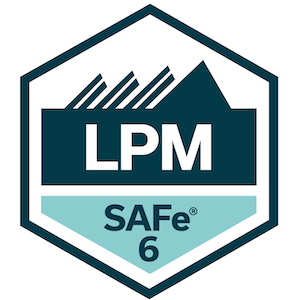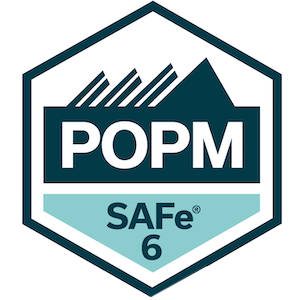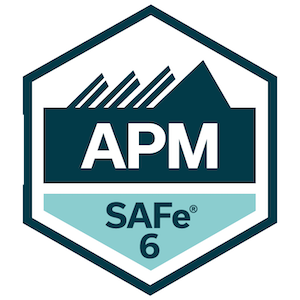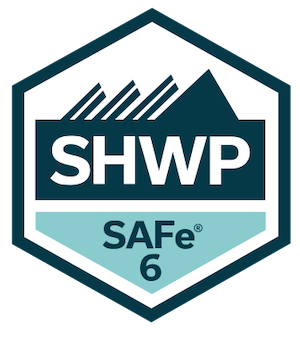
Ian Spence
Scagilize Network Partner (Trainer & Consultant), Advisor & SAFe Fellow
Ian Spence on:
Practical Ways to Improve Your Decision Latency
Part One
Following the success of last year’s SAFe Fellows’ Blog republication of my Scagilize blog on decision latency, I thought it would be a good time to revisit the subject and provide some more practical guidance on how to improve your decision latency.
The original blog can be found here: The Hidden Benefits of LPM Part 1: Improved Decision Latency and the republication as Improving Decision Latency here.
Recap: What is Decision Latency?
Decision latency is the time taken to make and act upon a decision. The longer the time taken to make and to act upon a decision the worse the decision latency.
By design, high performing Agile Teams have a good decision latency – small decisions are addressed within a day if not instantly and even the biggest decisions can expect to be made and acted upon within an iteration.
Unfortunately, the same cannot be said of most enterprises, even those made up of Agile Teams.
If you ask about an organization’s decision latency:
- Teams will often say “we make and act on our decisions quickly but if we need a decision from outside our team it can take months”
- And the leaders will often say “we make decisions quickly and effectively, but it can be months before anyone acts on them”
The most important thing to do to improve your decision latency is to embrace the agile principles of autonomous, self-sufficient, cross-functional teams and the decentralized decision-making they need to be empowered and effective.
Please read:
More
background on decision latency and its impact
and
more guidance on de-centralized decision-making.
Beyond De-centralized Decision-Making:
Practical Ways to Improve Your Decision Latency
Decentralized decision-making is necessary but on its own is not sufficient to significantly improve an enterprise’s decision latency. So, what else can you do to further improve your decision latency?
Repurpose your Sync Meetings
Make sure your Sync Meetings and Stand-Ups are decision-making forums
Over the years I’ve seen many discussions about the purpose and format of an agile team’s daily sync (aka daily scrum or daily stand-up).
The majority of coaches (and the supporting literature) promote the daily sync as a planning, alignment and / or review meeting, and due to the nature of the popular three question format execute them as reporting meetings. I must admit I’ve done the former myself - as if developers are going to welcome being invited to more planning and alignment meetings.
Nowadays, I like to present them as decision-making meetings; meetings where the team gets together to share the decisions they have made since the last meeting, make any necessary decisions needed to help achieve the team’s short-term goals and decide what they are going to do next.
To do this they may need to do some reporting and planning but the most important thing to do is to make and communicate decisions as a team.
Note: this would include sharing and discussing technical decisions – for example “I’ve decided to use this open-source class library” – with the team. If team members don’t learn about the decisions made during an iteration until the iteration review, then, let’s be honest with ourselves, it is too late.
As well as making the meetings more effective and actively addressing the team’s decision latency this will make the invitation far more attractive to the team members. The invitation to be involved in the team’s decision-making is far more appealing than to be involved in its planning and reporting.
But what does a team do when they reach the limits of their decision-making authority or need to share any of their decisions with other teams?
Well, if you are practicing agile at scale there will be other sync meetings and stand-ups where the need for higher level decisions should be addressed, and local decisions broadcast to a broader community.
For example, Table 1 presents the sync meetings that are recommended by SAFe and Scrum@Scale (the two scaling frameworks with which I am most familiar).
Sync Events in SAFe and Scrum@Scale
Scrum@Scale
| Level | Org Unit | Sync Event | Frequency |
|---|---|---|---|
| Team | Agile Team | Team Sync | About daily / weekly |
| Team-of-Teams* | Agile Release Train | Coach Sync | One or two times a week |
| Agile Release Train | PO Sync | Once a week or more often if needed | |
| Business Unit** | Portfolio | Port Sync | Weekly, Bi-Weekly or Monthly |
| Enterprise | Agile Executive Team | Team Sync | About daily / weekly |
Scrum@Scale
| Level | Org Unit | Sync Event | Frequency |
|---|---|---|---|
| Team | Scrum Team | Daily Scrum | Daily |
| Team-of-Teams* | Scrum-of-Scrums | Scaled Daily Scrum | Daily |
| Scrum-of-Scrums | PO Team Meeting | Undefined but typically once a week | |
| Business Unit** | Portfolio | Enterprise Daily Scrum | Daily |
| Portfolio | Meta Scrum Event | At least once a Sprint | |
| Enterprise | Executive Action Team | Enterprise Daily Scrum | Daily |
| Exec Meta Scrum | Meta Scrum Event | At least once a Sprint |
*The Team of Teams layer and events can recurse with Solution Trains and Scrum-of-Scrum-of-Scrums
**The Business Unit layer and events can recurse with Portfolios of Portfolios
Just as the Team Sync should be thought of as a decision-making forum so should all the higher-level syncs. In fact, it is even more important for these events to be decision-making events as they are the primary mechanism for the escalation of decisions that are outside the delegated authority of the teams.
Sadly, as the scope of the sync meetings becomes larger and larger three things tend to happen:
- They sound more and more like reporting meetings and less and less like decision-making meetings.
- Their frequency becomes less and less – even though Scrum@Scale prescribes Scaled Daily Scrums to be held daily (the clue’s in the name) most implementations regress to weekly meetings.
- They become less and less quorate – with the decision-makers opting not to attend as they see them as reporting meetings and delegate attendance to their administrative support.
This is the primary reason why when an agile team needs a decision that is outside their circle of control the decision latency goes from being measured in hours to be being measured in weeks and months.
As an agile organization the simplest and most effective ways to improve your decision latency are to:
- ensure that all the sync meetings are quorate and can make their decisions in real time ...
- ... and increase the frequency of the scaled syncs so that no team ever has to wait more than a week (if not a day) for the decisions they need to be actioned at a higher level.
Institutionalize the Meet After
Ensure that there is an opportunity to make decisions immediately they are needed
All of the Sync meetings in Table 1 are intended to be short – personally I find 15 minutes is more than enough for the synchronization part of any meeting - but it may not be enough time to discuss and make a decision.
In many organizations the conversation will go something like this:
- “We really need a decision about X.”
- “I agree that’s absolutely essential. Sadly, I’ve got to go to my next meeting now – let’s get together next week to discuss the details.”
- “Ah, I’m really busy at the moment there are no gaps next week, but I could do Friday the week after next”
- And so, it goes….
The best way to solve this problem is to ensure that there is always time scheduled for a Meet After. This way the relevant people can get together immediately to make decisions or create an appropriate action plan.
Personally, I recommend that you schedule at least an hour for all Sync meetings above the team level. The first 15 minutes are for the Sync and the other 45 minutes for the Meet After. The people at these meetings will always be busy and overloaded, and if there are no further decisions needed will be more than grateful to get 45 minutes of their day back.
Just by introducing Meet Afters I have seen decision latency of ARTs, portfolios and business units decrease dramatically – with things that would have typically taken weeks if not months to resolve being addressed within hours and days.
Sadly, the “no-time to meet now” issue is often joined by its little brother – “that decisions in Alex’s domain so we need to find a slot in their diary as well.” As noted above make sure these meetings are quorate and if, as a decision maker, you can’t go make sure you send someone with the authority to make and/or agree decisions on your behalf. If they are not quorate then they will not significantly reduce your decision latency.
Wrap Up
In our next blog (Part 2: Increase Executive Agility) we will look at two more practical ways to improve your decision latency. Until then remember those daily, weekly, monthly and other sync meetings and stand-ups should really be decision-making meeting and not planning or, shudder, reporting meetings. So make sure they are empowered and quorate.
PS: If you’d like a preview of the next few blogs content please join our
next lunch-and-learn where we will be discussing decision latency and any, and all, ways we have found to improve it.



























